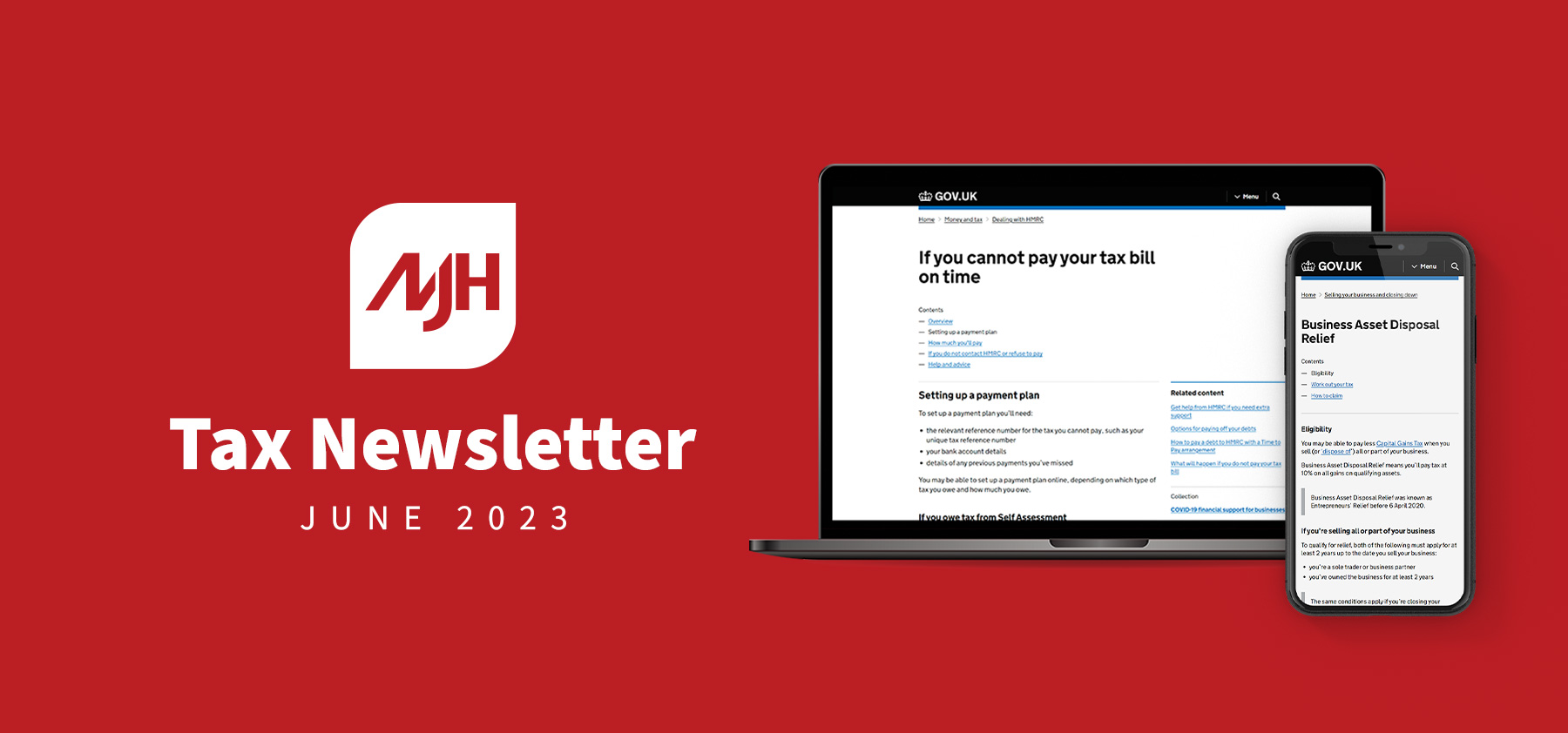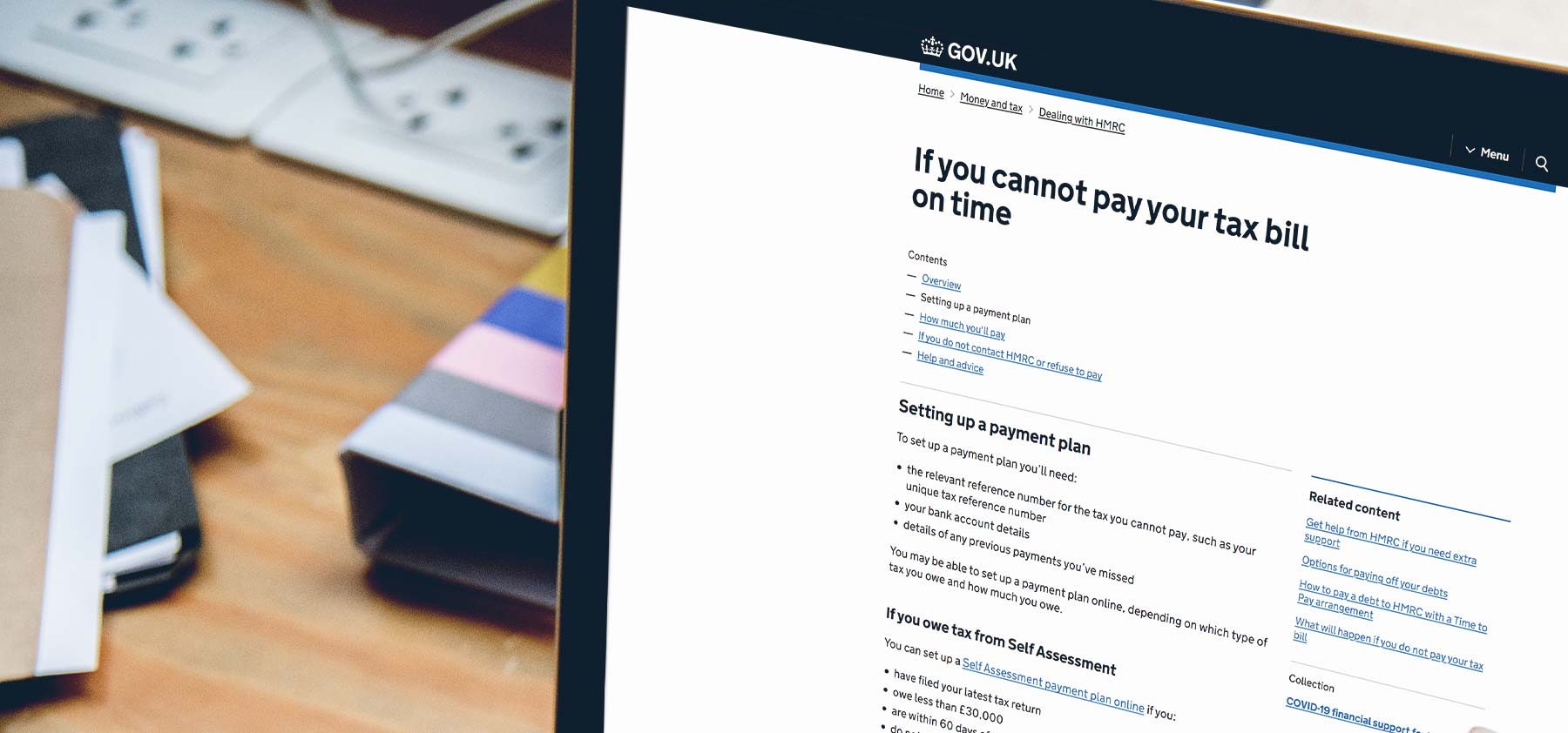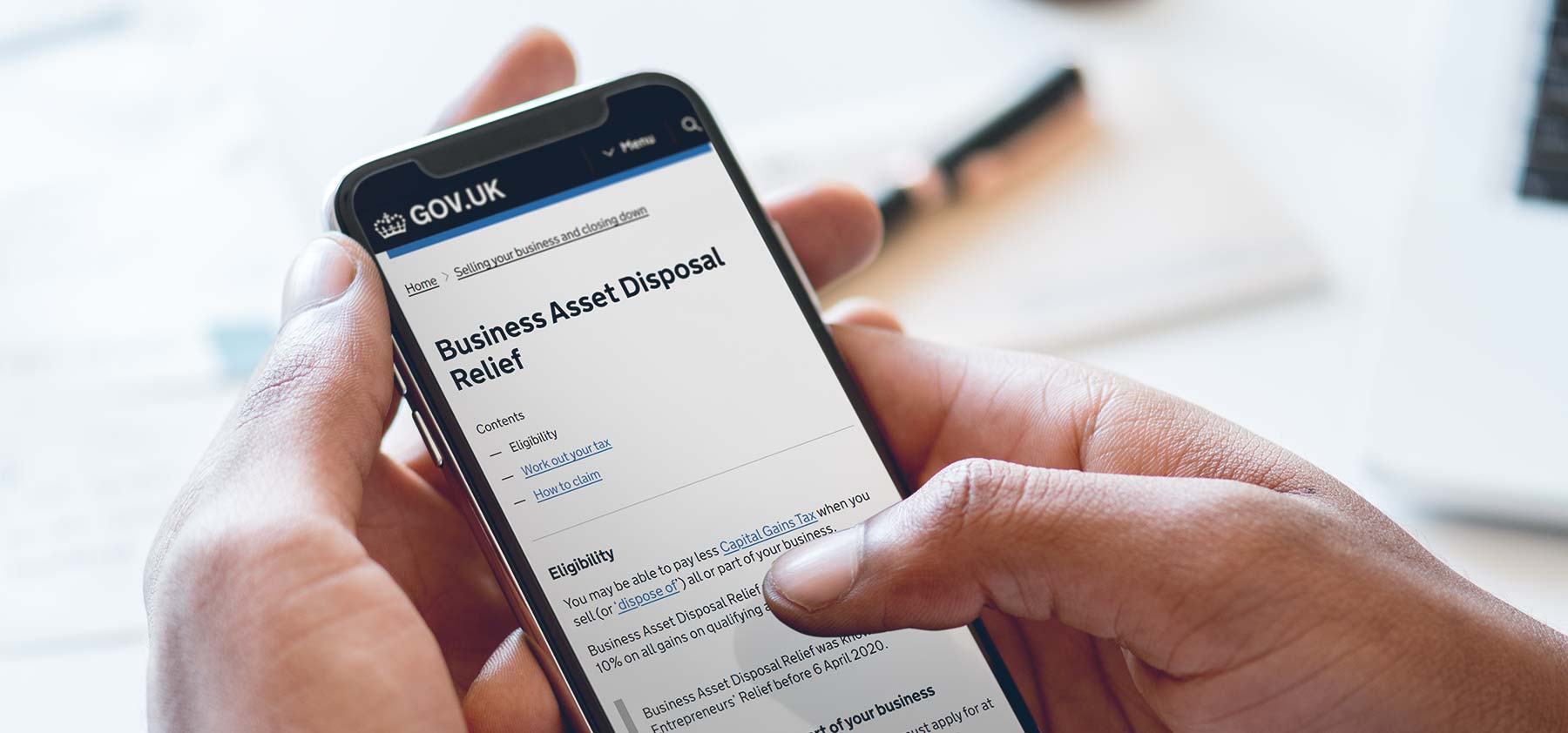
How to spread your PAYE payments
Your business may well be stretched right now, the NMW rates rose by over 10% from 1 April and other input costs have increased by even more, particularly food and energy. It is tempting to use the amounts deducted from your payroll to pay pressing bills, but that is not a good idea.
Where the payroll deductions are not paid over to HMRC on time – by 22nd of each month – late payment interest is charged at 7%.
In addition to the late payment interest, late payment penalties are charged as follows:

| Number of late payments in tax year | First penalty | Additional penalty after 6 months | Additional penalty after 12 months |
| 1 | none | 5% | 5% |
| 2–4 | 1% | 5% | 5% |
| 5–7 | 2% | 5% | 5% |
| 8–10 | 3% | 5% | 5% |
| 11 or more | 4% | 5% | 5% |
You won‘t receive a penalty if you are late with just one PAYE payment to HMRC in the tax year, as long as the amount due is paid within six months of the due date. But if you need to make monthly payments the penalties will soon mount up where the timing of the regular payments slip for even one day.
Where you are struggling to pay over your PAYE to HMRC on time, you should apply for a time to pay (TTP) agreement through your online business tax account on gov.uk. This can help you spread your PAYE debt over six months.
The TTP agreement will be granted automatically if the following conditions are met:
– All PAYE and CIS returns have been submitted;
– PAYE debt is less than £15,000;
– No other tax debts exist;
– The application is made within 35 days of the date the PAYE was due; and
– TTP plan will pay off the debt within six months.
If the above conditions can‘t be met you should contact HMRC on the payment support service: 0300 200 3825 to negotiate a TTP agreement.
HMRC warn of BAD relief claims

Entrepreneurs‘ Relief (ER) was renamed Business Asset Disposal (BAD) relief on 11 March 2020, and at the same time the value of gains which can be covered by this relief was reduced from £10m to £1m on 11 March 2020. Where gains qualify for either ER or BAD relief the capital gains tax (CGT) is payed at 10% instead of at the full rate of 20%
This cap of £1 million of gains is a lifetime cap for the taxpayer not an annual cap. What‘s more the BAD relief is merely a rebranding of Entrepreneurs‘ Relief and any claims made under ER reduce the available cap for BAD relief.
If you had already made ER claims covering £1 million or more of gains by 10 March 2020, you can‘t make any further BAD relief claims, but older ER claims are not disturbed. However, if you hadn‘t exceeded £1 million of gains with ER claims, and you make a new BAD relief claim which takes the total of gains covered by either ER or BAD relief to over £1 million, the excess gains over £1m are not eligible for BAD relief.
This change in name for the relief coupled with the new rules of the lifetime cap has confused many people, leading to some incorrect BAD relief claims submitted on tax returns for 2020/21 and 2021/22.
HMRC has been writing to taxpayers who may have made incorrect claims for Business Asset Disposal (BAD) relief because their lifetime cap has apparently been exceeded.
Letter 1 is sent to taxpayers who had already exceeded the £1 million lifetime cap before their 2021/22 tax return was submitted. HMRC asks the taxpayer to amend their 2021/22 tax return to remove the BAD relief claim so the gains are taxed at the normal rate, which will normally be 20%.
Letter 2 is sent to taxpayers whose 2021/22 BAD relief claim takes them over the £1m cap. In such cases HMRC asks the taxpayer to amend their BAD relief claim to reduce the amount of gains included.
In both situations the taxpayer will need to pay additional CGT plus interest. HMRC is also likely to charge a penalty for an inaccurate tax return on the basis that the correction is a prompted disclosure. This penalty will range from 15% to 30% of the underpaid tax for a careless mistake, or 35% to 70% for a deliberate error.
VAT margin scheme for car dealers

Brexit has introduced a VAT border between Great Britain and Northern Ireland, the implications of which are still being worked through.
From 1 May 2023, second-hand vehicles which are purchased in Great Britain then sold in Northern Ireland have to carry VAT on the full selling price. Before this date motor traders could use the second-hand margin scheme under which VAT is charged only on the margin of sales value added by the dealer.
To compensate these dealers, HMRC has introduced a second-hand motor vehicle payment scheme, which allows businesses to claim a VAT-related payment if they:
– are VAT-registered in the UK and have a business establishment in the UK;
– buy an eligible second-hand vehicle in Great Britain; and
– move that vehicle with the intention to resell it in Northern Ireland or to the EU.
Traders can make use of the margin scheme for any eligible motor vehicles purchased in Great Britain and moved to Northern Ireland before 1 May 2023. If these vehicles are still in stock on 1 May 2023, they must be sold by 31 October 2023 to remain eligible for the margin scheme.
Excess mileage payments

Petrol and diesel pump prices are high, but the tax-free mileage rates (see table) payable to employees who use their own vehicles on business haven‘t been adjusted for over a decade.
| Vehicle | First 10,000 miles per year | Above 10,000 miles per year |
| Cars and vans | 45p | 25p |
| Motorcycles | 24p | 24p |
Many employees just can‘t afford to use their own car or motorbike for business journeys if they only get reimbursed at these rates, so some employers pay more. But any excess above the tax-free rate is taxable, and subject to NIC.
If you have paid your employees higher mileage rates than in the table above, you need to treat those excess amounts as extra salary and put them through the payroll. You also need to communicate this treatment to the affected employees.
Where the employee‘s own car is purely electric you can still pay up to the rates in the above table for business journeys, tax and NIC-free.
Where the employee charges their private electric car at a charging point at work for free, there is no taxable benefit for the employee on using that electricity. Things get more complicated if you reimburse your employee for the cost of charging their private electric car at their home, or at a road-side charging point.
June Questions and Answers

Q1. I have just received a bonus payment of £100 from the Nationwide Building Society. Do I need to pay tax on this?
A: This bonus payment from the Nationwide is treated as normal bank interest for tax purposes, so it is taxable. However, in most cases it will be covered by your savings allowance of £1,000 (£500 for higher rate taxpayers). Taxpayers who pay income tax at 45% on savings do not benefit from a savings allowance, so they will have to pay £45 in tax on this bonus.
You will need to include this bonus in your 2023/24 tax return, if you normally complete one.
Q2. My company regularly pays expenses on my behalf which I later reimburse the company for, I have a variable outstanding debt with the company during the year. I‘ve read that if the total of that debt exceeds £10,000 at any point the company has to pay NIC at 13.8% on the entire amount. Is that correct?
A: The company has to pay NIC at 13.8% on the value of the deemed interest on the outstanding debt, which is treated as a taxable benefit for you, assuming you don‘t actually pay interest on that debt.
While the total debt is less than £10,000 there is no taxable benefit in kind, so its only periods during which the debt exceed £10,000 when the nominal interest needs to be calculated at the official rate (currently 2.25%).
If the debt was £12,000 for 3 months, the benefit in kind would be: (2.25% x 12,000) x 3/12 = £67.50. As a 40% taxpayer you would pay tax of £27. The company would pay NIC at 13.8% on £67.50 = £9.32.
Q3. An employee has been on maternity leave for several months and as a small company I have reclaimed the statutory maternity pay (SMP), but HMRC hasn‘t repaid this amount in full. Why could this be?
A: The PAYE system is set up to collect tax and other payroll deductions. When an employer is due a refund that sum is first off-set against the PAYE due to be paid over every month or quarter. Rather than pay back the balance of the refund to the employer, HMRC hang on to it to set it against future tax/ NIC liabilities.
If you look in your business tax account under the PAYE section and click on payments made, it should show an unallocated credit, which will be the balance of the SMP owing. You can ask HMRC to pay that sum to you, but that will involve phoning the employer helpline.
June Key tax dates

15 – US expatriates must file their 2022 US federal tax returns by this date if they have not obtained a filing extension. If more time is needed an extension can be obtained to 15 October 2023. Interest will accrue from 15 April 2023 on any tax due, until it is paid.
22 – Employers must pay over PAYE, NIC and CIS deductions made for the month to 5 June 2023, so the money clears the HMRC bank account by this date.
 Book a No-obligation Call or Meeting
Book a No-obligation Call or Meeting




 Book a Call or Meeting
Book a Call or Meeting

